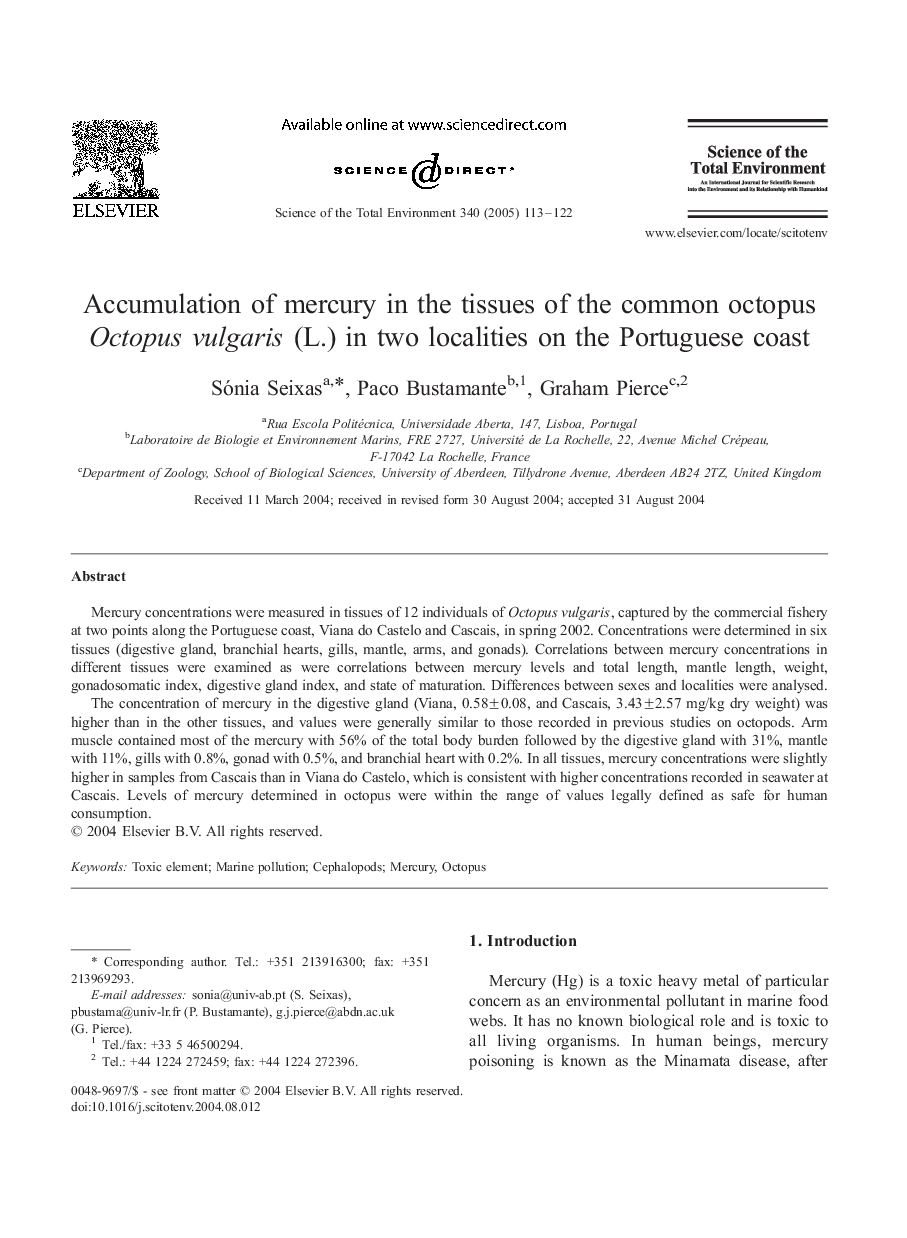| Article ID | Journal | Published Year | Pages | File Type |
|---|---|---|---|---|
| 10110915 | Science of The Total Environment | 2005 | 10 Pages |
Abstract
The concentration of mercury in the digestive gland (Viana, 0.58±0.08, and Cascais, 3.43±2.57 mg/kg dry weight) was higher than in the other tissues, and values were generally similar to those recorded in previous studies on octopods. Arm muscle contained most of the mercury with 56% of the total body burden followed by the digestive gland with 31%, mantle with 11%, gills with 0.8%, gonad with 0.5%, and branchial heart with 0.2%. In all tissues, mercury concentrations were slightly higher in samples from Cascais than in Viana do Castelo, which is consistent with higher concentrations recorded in seawater at Cascais. Levels of mercury determined in octopus were within the range of values legally defined as safe for human consumption.
Related Topics
Life Sciences
Environmental Science
Environmental Chemistry
Authors
Sónia Seixas, Paco Bustamante, Graham Pierce,
